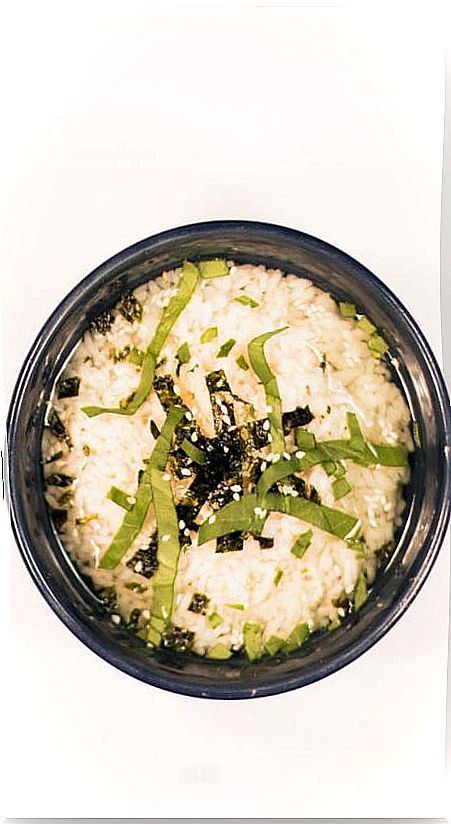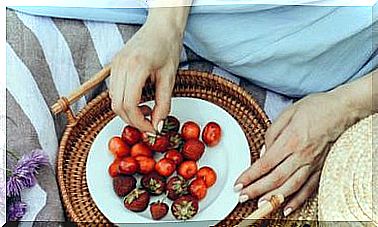5 Chinese Cooking Ingredients That Brighten Up Your Recipes
Transfer Asia to your dishes with these simple tips on how to use rice, miso, shiitake mushrooms, tofu and vinegar.

If you like Chinese cuisine in general, you will see that there are ingredients that may not be so common and that they come in rather large containers for how little they are used in each dish. These ingredients are not only useful for Chinese dishes, they can be used in a multitude of preparations of any style (fusion) on a day-to-day basis. We review some of them:
1. Rice
There are a lot of varieties of rice that we can find in any grocery store. The most common are the round ones that we use for any dish, along with the long ones, basmati and thai, which have been gaining fame in recent years, but also glutinous rice, whole grains of all kinds and wild (which is not rice but it is about as such), blacks, reds and greens.
In oriental food stores there is usually a good range of “rare” rice for all those new creations that we have in mind. For “normal” use always choose a normal round brown rice.
As it usually takes longer to cook, many times we do it too long and it ends up being open. To avoid this, let the rice soak for at least half an hour, drain it, put it in the saucepan with the same volume of water, covered, and when it boils, lower the heat to a minimum until there is no water left. In this way we will have a loose brown rice and at its point.
All hard cereals can be made this way, leaving them to soak beforehand, just like we do with legumes. This way they hydrate and take less time to do.
The Chinese rice are glutinous general. There are round or long grain. In general, to cook them it is better to wash them two or three times, and then put them in the saucepan with a little more than their volume in water (1.25 cups of water per cup of rice). In this way the starches do not dissolve in the water creating a paste, but remain in the rice and give it that characteristic texture that we like so much.
Of course you do not have to stir it while it cooks. The good thing about these rice dishes is that they are much better in sautéed and as leftovers if we refrigerate them properly.
2. Miso
The miso and other fermented pastas are a perfect ingredient for soups, broths and sauces. They are rich in protein and are very good. Depending on the ingredients and the color they will have more or less strong flavors. For example, dark brown miso tastes a lot like soy sauce, so you will need less to make a broth from it.
The white miso is fine too for making sauces and dressings. It dissolves easily in water and can be mixed with lemon, oil, vinegar, spices and herbs to make more nutritious and different dressings.
Miso lasts a long time in the fridge if we keep it in a tightly closed container. Get a couple of packets of misos (one light and one dark) for when the cold starts, you will appreciate having a healthy instant soup always on hand.
3. Shiitake mushrooms
Shiitake are the most representative mushrooms of Chinese cuisine and the ones that we know the most thanks to the fact that they can be found in many establishments, both fresh and dried. It is best to buy them dried. Not only do they taste better afterwards, they also keep great and all we have to do to use them is hydrate them by soaking them in water. This water will also take on the flavor of the mushrooms and will not be used to make great soups and sauces.
The shiitake mushrooms, to the contrary of flat mushrooms to which we are accustomed, have much flavor and usually are used both as an ingredient and as a condiment. That is, not much quantity is used for a dish, and when they are served alone it is usually for example on grilled skewers (2-3 units). If we go over shiitake, the whole plate will taste like that.
Try putting a shiitake mushroom or two in your stews and stews for flavor. Hydrate them first in hot water (they take less time) and add them to the stew along with the water. You can also add the shiitake water for more flavor.
4. Tofu
Tofu is now almost everywhere and there is a great variety. The most common, from the supermarket, are extra firm tofus. Hard blocks that do not break easily and brown quickly in the pan.
It is a very useful option. At any time you can make some slices with olive oil and spices, browning them, for a sandwich or a sandwich, and add a pinch of soy sauce at the end for a touch of intense flavor.
There are many things that can be done with tofu, such as using it as a substitute for meat in almost any dish (from pasta to stews) and even desserts, sweets or sauces. The vegetable mayonnaise, for example, can be made starting with a block of tofu and whisking. By having less liquids, a vegan mayonnaise is obtained that needs less addition of oil to be very thick.
Tofu has flavor, just like pasta and rice. What happens is that we are not used to it or we have unrealistic expectations (for example, trying a piece of tofu as is and that it tastes like beef). Like everything, it is knowing how to use and cook it.
5. Vinegar
Rice, apple, white wine, red wine, Modena … there are many different vinegars with their aromatic notes that can help us in the kitchen, not only for dressing salads.
The rice vinegar, for example, is a condiment in the eastern cuisines that just put you in a soup in a stir fry. Do the test. When you’re done with a veggie stir fry, add a splash (1 tablespoon at most) of the rice vinegar, sauté it all together to mix and evaporate the liquid, and serve. You will notice the change, but without pungency or sour smell.
Many stir-fries, sauces, pâtés and vegetable creams also benefit from the addition of vinegar. It is used the same as we do, for example, with wine. It is a matter of finding the right vinegar for each case.
When you make a seitan stew, add a pinch of rice vinegar. In sautéed, a pinch of Modena vinegar. In sauces, apple cider vinegar. And in legumes such as lentils and beans, white wine vinegar or grape vinegar. And let it all boil together, don’t add it last.
In many cases, vinegar helps us to preserve food (typical pickles, for example) or to improve textures and flavors. In vegan potato tortillas, in which we use chickpea flour, the vinegar removes the dry legume flavor but leaves no noticeable trace of acidity or flavor. By adding vinegar to the classic lentils in stew,
we improve their texture.
Vinegar also serves as an acidity corrector in patés such as hummus (if no matter how much lemon we put in, it still does not have the acidity you want, combine lemon and vinegar), and to change the colors of vegetables whose pigments are sensitive to the pH (beet, red cabbage, etc).
In addition, vinegars with flavors or with herbs and spices can be made at home. The important thing is the raw material with which the vinegar has been made. That is why I recommend from different sources according to the use that we are going to give it.
The most commonly used vinegars in Chinese cuisine are chinkiang vinegar, very dark in color, with a strong flavor and aroma, and rice vinegar, sweet and mild. Both are used for all kinds of dishes depending on the nuance they need. For example, it is more common that rice vinegar is used for sauces while chinkiang vinegar is used for stir-fries and roasts.









